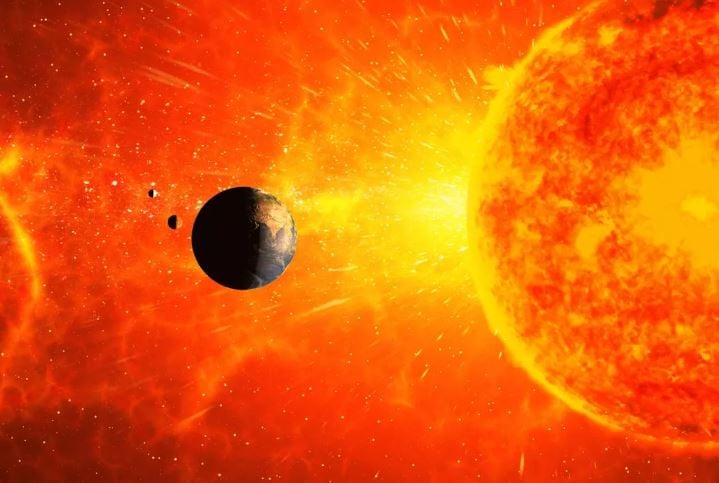It may sound like a doomsday scenario, but the prediction is based on supercomputer simulations. Scientists used coupled biogeochemical and climate models to calculate the limits of Earth's oxygen-rich atmosphere.
A study published in 2021 by Kazumi Ozaki and Christopher T. Reinhard in the journal Nature Geoscience Research found that the rising temperatures from the sun will push the Earth beyond the threshold of habitability. At that point, our planet will no longer have enough oxygen in its atmosphere to sustain current life forms.
“The modern Earth atmosphere has a high oxygen content and is a remotely detectable signal of Earth’s surface biosphere,” the team writes. However, they also note: “The longevity of oxygen-based biosignatures in Earth’s atmosphere remains uncertain, especially in the distant future.”

The sun's rising temperature will gradually push our planet beyond its habitable limits. Photo: Getty Images/iStockphoto
It is worth noting that the oxygen we have now is not a permanent state. This research highlights the urgency of searching for life on Earth-like planets outside the Solar System – an important step in humanity's survival strategy.
The warning from NASA and Toho University comes shortly after another study from the University of Bristol, which simulated how extreme global warming will be in the future, leading to the continents merging into a new supercontinent called Pangea Ultima.
During the Pangaea Ultima, the Earth would become extremely hot and dry, with a dramatic increase in the frequency of volcanic eruptions. These conditions would trigger a mass extinction, wiping out many species, including humans and mammals.
“The new supercontinent would create a double shock – from the continental effect, a hotter sun and higher CO₂ concentrations in the atmosphere – that would leave much of the planet hot,” said Dr Alexander Farnsworth, lead author of the study and senior research associate at the University of Bristol.
“We will face an almost hostile environment, with no food or water resources for mammals,” he warned.
“The temperature would range from 40 to 50 degrees Celsius (104 to 122 degrees Fahrenheit), even higher on extreme days, combined with high humidity, making it impossible for humans and many animals to release heat through sweat to cool their bodies – and that would be the end,” he added.
Source: https://doanhnghiepvn.vn/cong-nghe/sieu-may-tinh-dua-ra-du-doan-dang-lo-ngai-ve-thoi-diem-su-song-tren-trai-dat-se-cham-dut/20250513084707368




















































![[Maritime News] More than 80% of global container shipping capacity is in the hands of MSC and major shipping alliances](https://vphoto.vietnam.vn/thumb/402x226/vietnam/resource/IMAGE/2025/7/16/6b4d586c984b4cbf8c5680352b9eaeb0)













































Comment (0)